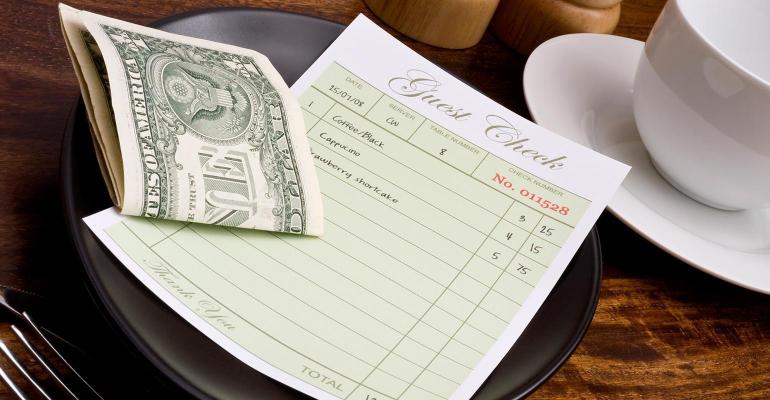We may be hitting a ceiling on menu inflation. Maybe. January’s Consumer Price Index report was released Tuesday morning, showing that menu prices were up 0.6% in January.
Broken down by segment, full-service menu prices were up 0.5%, while limited-service prices were up 0.7%. This is against the backdrop of an 8.2% increase in menu prices year-over-year, including 8.1% in the full-service category and 6.7% in the limited-service category.
On an annual basis, the CPI for all items cooled to 6.4% in January from its 41-year-peak in June of 9.1%, however it marked a 0.5% month-over-month increase, illustrating the stubborn nature of this inflationary cycle. In December, menu prices rose 0.4%, for instance – 0.1% at full-service restaurants and 0.5% at limited-service restaurants.
Overall, food prices increased 0.5% in January, up from December’s 0.3% increase, meaning restaurant operators aren’t likely to adjust their menu prices anytime soon. Those menu price increases have been implemented across much of the industry to protect margins against lingering inflation, and consumers have so far shown they’re willing to keep pace. New data from Revenue Management Solutions finds that net sales remain positive at 7.8% year-over-year across the industry. However, consumers are starting to show some signs of inflation fatigue, as traffic across the quick-service segment was down 0.4% in January. Also, quantity-per-transaction declined by nearly 5% year-over-year, indicating the consumers are reducing the number of items they purchase. Bullish pricing began a little over a year ago, and traffic in Q4 was down by 4% industry wide, according to RMS.
Still, there are some signs of optimism for both operators and consumers. During his company’s Q4 earnings call, for instance, McDonald’s CFO Ian Borden said the U.S. is past inflation peak and heading on a downward slope. Starbucks also expects pricing to “normalize” sooner than later.
“Our U.S. business is benefiting from pricing that was taken in the back half of last year. We’ll start to see pricing levels normalize more to historical level ranges. Typically, our pricing had been taken in line with inflationary pressures. Given that we’re seeing inflation still elevated relative to prior years, but we’re starting to see it soften slightly, we don’t have expectations that we’ll have to further that pricing increase. Instead, we’ll start to see pricing normalize by the back half of the year,” Starbucks CFO Rachel Ruggeri said during her company’s Q1 earnings call earlier this month.
Further, restaurants continue to trend lower than grocery prices, which are up 11.3% year-over-year and were up 0.4% in January. In the share-of-stomach competition, that’s an important benchmark to watch.
“I saw some data about grocery inflation being pretty high,” Yum Brands CEO David Gibbs said during his company’s Q4 earnings call last week. “So, I think relative to alternatives, we’re still a very attractive option.”
Contact Alicia Kelso at [email protected]





